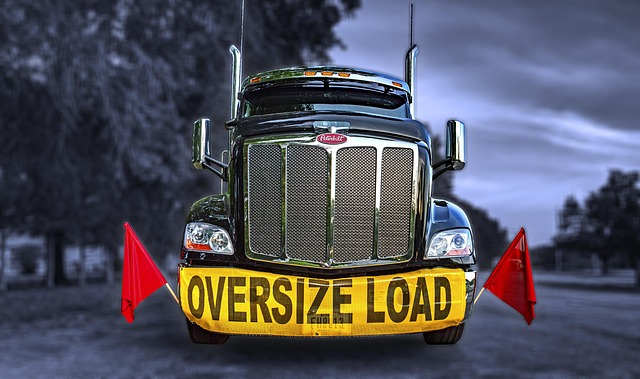Looking to register your car in California? It’s a straightforward process, but understanding the requirements is key. This guide walks you through every step, from gathering essential documents for a successful DMV (Department of Motor Vehicles) VIN (Vehicle Identification Number) verification to completing the registration and paying fees. By following these steps, you’ll be on your way to becoming a California vehicle owner in no time.
- Understand the Requirements for Car Registration in California
- Gather Necessary Documents for VIN Verification
- Perform a California Vehicle Identification Number (VIN) Check
- Visit Your Local California Department of Motor Vehicles (DMV) Office
- Complete the Registration Process and Pay Fees
Understand the Requirements for Car Registration in California

Before you start the registration process, it’s crucial to understand the requirements for car registration in California. The California Department of Motor Vehicles (DMV) has specific guidelines that all vehicle owners must adhere to. One key step is the DMV vin verification, which involves checking the vehicle’s unique identification number (VIN). This ensures the car’s history is clear and helps prevent fraud.
Additionally, you’ll need to ensure that your vehicle meets safety and emissions standards. A mobile vin verifier or a vin inspection can assist in this process by providing instant, accurate data on the car’s condition and history. It’s essential to have all necessary documents ready, including proof of ownership, insurance, and identity, as these will be verified during the registration.
Gather Necessary Documents for VIN Verification

To register your car in California, you’ll first need to gather all the essential documents for DMV VIN verification. This process involves verifying the vehicle’s unique identifier (VIN) and ensuring its authenticity, which is crucial for a successful registration. For this step, you’ll require several key documents, including the title or registration certificate from the previous state, a valid driver’s license, proof of insurance, and your California driver’s abstract.
Additionally, you can streamline this process by utilizing a mobile VIN inspection service, which allows you to get immediate results without visiting a DMV office. These services provide on-demand mobile vin verification, making it convenient for busy individuals or those with limited access to transportation. This modern approach ensures that all your documentation is accurately checked before registration.
Perform a California Vehicle Identification Number (VIN) Check

Before registering your car in California, it’s crucial to perform a DMV VIN (Vehicle Identification Number) verification. This step ensures that the vehicle you’re planning to register is legitimate and hasn’t been reported as stolen or had its identity altered. You can complete this process through a mobile vin verifier or by visiting your local DMV office for an inspection.
A mobile vin verification service allows you to check your car’s history remotely, providing peace of mind before committing to the registration process. This is particularly convenient if you’re pressed for time or have a busy schedule. Alternatively, a simple vin inspection at the DMV can yield similar results, confirming that your vehicle’s details match the records on file.
Visit Your Local California Department of Motor Vehicles (DMV) Office

To begin the registration process, start by visiting your local California Department of Motor Vehicles (DMV) office. This is a crucial step as it involves essential procedures like VIN verification. Here, you’ll need to present relevant documents and ensure your vehicle meets all legal standards. The DMV staff will guide you through the requirements, which may include proof of insurance, registration fees, and possibly a smog test depending on your vehicle’s age.
During this visit, consider utilizing services like mobile VIN verifiers, offering convenient alternatives for those with busy schedules. These tools enable a quick and accurate VIN inspection, ensuring all information is up-to-date before finalizing the registration. This step simplifies the process, especially if you’re registering a newly purchased vehicle or transferring ownership.
Complete the Registration Process and Pay Fees

After gathering all necessary documents, it’s time to complete the registration process with the DMV. Visit a local California DMV office or utilize their online services for this step. You’ll need to provide information about your vehicle, including its make, model, and year. A key part of this process involves the DMV VIN verification, ensuring the Vehicle Identification Number (VIN) is accurate and matches the data on record. This can be done through a mobile vin inspection or by utilizing a mobile vin verifier for convenience.
During this stage, you’ll also be required to pay the necessary fees. These fees cover the registration costs, license plate issuance, and other associated expenses. Ensure you understand the breakdown of charges before finalizing the transaction. Properly completing this phase ensures your vehicle is officially registered, allowing you to legally operate it on California roads.
Registering a car in California involves understanding specific requirements, gathering essential documents, and completing a DMV VIN verification process. By ensuring you meet all these steps, from providing proof of insurance to passing emission tests, you’ll be on your way to securing your vehicle’s registration smoothly and efficiently. Remember, accurate and up-to-date information is key when dealing with the California DMV, so stay prepared with all necessary documents for a seamless car registration experience.
